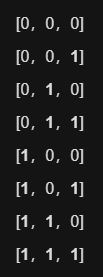1
2
3
4
5
6
7
8
9
10
11
12
13
14
15
16
17
18
| class Solution {
public:
vector<vector<int>> floodFill(vector<vector<int>>& image, int sr, int sc, int newColor) {
dfs(image, newColor, image[sr][sc], sr, sc);
return image;
}
private:
void dfs(vector<vector<int>>& image, int newColor, int oldColor, int i, int j)
{
if(i < 0 || i > image.size() - 1 || j < 0 || j > image[0].size() - 1 || image[i][j] != oldColor || image[i][j] == newColor)
return;
image[i][j] = newColor;
dfs(image, newColor, oldColor, i + 1, j);
dfs(image, newColor, oldColor, i - 1, j);
dfs(image, newColor, oldColor, i, j - 1);
dfs(image, newColor, oldColor, i, j + 1);
}
};
|
